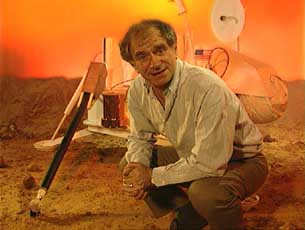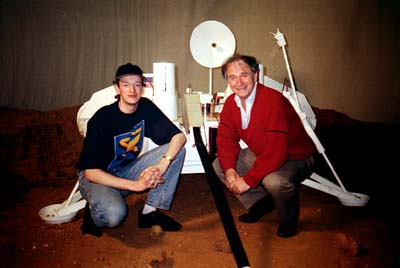How long has my obsession with all things Martian being going on? Well you'll have to go back to my childhood watching Saturday morning 1950's science-fiction films such as "Robinson Crusoe on Mars", and "Flash Gordon's Trip to Mars" on BBC2 on Friday at dinner time - but most of all, from the age of ten I've been obsessed with an image of Carl Sagan standing next to a Viking lander craft in his seminal 1980 Cosmos TV series.

When I was a student at Bournemouth University in 1995, we had to produce two graduation films in our final year. The below video was my attempt to emulate that great series and ponder on a riddle that had always intrigued me:
In 1976 NASA sent two probes named Viking to Mars to search for life. Three experiments were carried out on the soil - and all returned positive results. NASA found alternative explanations for each of the results, which begs the question why spend a reported billion dollars sending two probes to Mars with such lame experiments that can produce ambiguous results?
So, I took out a student loan, and ran my credit card up to its limit building a Martian studio set and a model Viking lander craft, and I persuaded my childhood hero, BBC TV's Think of a Number presenter Johnny Ball, to present a programme about the mission.
Fast-forward to 2007, and I was pleased today to read on CNN.com about Washington State University geology professor Dirk Schulze-Makuch. Prof Schulze-Makuch delivered a paper at a meeting of the American Astronomical Society in Seattle, Washington this week theorising that the Viking probes may indeed have found Martian microbes - but inadvertently killed them! He believes that NASA were looking for the wrong kind of life, so they didn't recognise it.
This combined with last month's photographic evidence of signs of geological changes suggesting flowing water on Mars only further excites me when I think about my life-long love for The Red Planet.
I hope you forgive the video's naivity, but enjoy it all the same. It seems like it's more relevant now than when I made it!

(Picture credit: NASA JPL & Stuart Arnott)




Comments